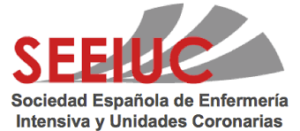The usage of immersive virtual reality (iVR) in the context of an intensive care unit (ICU) is scarce. Our objective was to assess the feasibility of the usage of iVR in critical patients with or without mechanical ventilation (MV) and to determine the anxiety degree before and after each session.
MethodsAnalytical, descriptive, prospective, and cross-sectional research. Pilot test with 20 patients from a polyvalent ICU of a tertiary hospital. Adult patients were included, either connected or not to MV, watchful and calmed (RASS −1/+1) and without delirium (negative CAM-ICU).
Oculus Go (Facebook Technologies, LLC) iVR glasses were the model used. The relaxation strategy consisted in the visualization of an experience of 15 min with scenes related to nature and fantasy, relaxing music with a plot. The sessions were individual, with the patient monitored in a fowler position or seated. The anxiety degree before and after each session was evaluated following a reduced version of the Spanish “Cuestionario de Ansiedad Estado-Rasgo (STAI-e)” and they were analysed using T samples coupled (statistical significance when p-value was <0.05).
ResultsIncorporation of 20 patients with an average age of 63.9 years old (60% men). A total of 34 sessions of iVR were conducted. 32% patients mechanically ventilated, 32% high-flow oxygen therapy, 36% other breathing supports. 80% of the sessions were completed without serious side effects. A significant decrease in the anxiety degree was observed after each iVR session: first session mean change −2.68 (SD = 2.75), p = 0.000; second session mean change −1.86 (SD = 1.57), p = 0.021; third session mean change −1.67 (SD = 1.63), p = 0.054.
ConclusionThe usage of iVR in the context of an ICU is feasible, even with patients mechanically ventilated. iVR reduces the anxiety degree in the critic patient, which suggests that “digital therapies” can be effective to improve the emotional state during their stay in the ICU.
El uso de la realidad virtual inmersiva (RVi) en el contexto de una Unidad de Cuidados Intensivos (UCI) es escaso. Nuestro objetivo fue evaluar la viabilidad del uso de la RVi en los pacientes críticos con o sin ventilación mecánica (VM) y determinar el grado de ansiedad antes y después de la sesión.
MétodoEstudio analítico descriptivo, prospectivo y transversal. Prueba piloto con 20 pacientes de una UCI polivalente de hospital terciario. Se incluyeron pacientes adultos, conectados o no a VM, alertas y tranquilos (RASS −1/+1) y sin delirio (CAM-ICU negativo).
Se utilizaron gafas de RVi Oculus Go (Facebook Technologies, LLC). La estrategia de relajación consistía en la visualización de una experiencia de 15 minutos de duración, con escenas naturales y fantasía, música relajante y una narrativa. Las sesiones se realizaron individualmente, con el paciente monitorizado y posición fowler o sentado. La ansiedad antes y después de cada sesión se evaluó mediante la versión reducida en español del Cuestionario de Ansiedad Estado-Rasgo (STAI-e) y se analizó mediante prueba T de muestras emparejadas (significación estadística cuando el valor p fue <0,05).
ResultadosInclusión de 20 pacientes, edad media de 63,9 años, 60% hombres. Se realizaron un total de 34 sesiones de RVi. 32% pacientes ventilados mecánicamente, 32% oxigenoterapia de alto flujo, 36% otros soportes respiratorios. Se completaron el 80% de las sesiones, sin interrupciones por efectos adversos graves. Se observó disminución en el nivel de ansiedad después de cada sesión de RVi: primera sesión cambio promedio -2,68 (DS = 2,75), p = 0,000; segunda sesión cambio promedio -1,86 (DS = 1,57), p = 0,021; tercera sesión cambio promedio -1,67 (DS = 1,63), p = 0,054.
ConclusionesEl uso de la RVi en el contexto de UCI es viable, incluso en pacientes ventilados mecánicamente. La RVi reduce la ansiedad del paciente crítico, lo que sugiere que esta “terapia digital” puede ser eficaz en la sensación de bienestar durante el ingreso en UCI.












